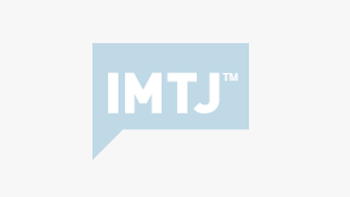At Treatment Abroad, we recently received correspondence regarding a UK family’s experience of stem cell tourism. The patient is a four year old boy with autism and speech problems. The parents, desperate to find a cure for their son, started exploring the claims for the use of stem cell therapy in the treatment of autism.
At Treatment Abroad, we recently received correspondence regarding a UK family’s experience of stem cell tourism. The patient is a four year old boy with autism and speech problems. The parents, desperate to find a cure for their son, started exploring the claims for the use of stem cell therapy in the treatment of autism. They selected a stem cell clinic in China and spend £20,000 on a one month course of treatment in Beijing. Their story is a warning to anyone who is considering the option of unregulated and unproven stem cell therapy and to those in the industry who promote such miracle cures to desperate patients.
“I could not watch my son suffering such abuse”
The parents and the boy underwent a traumatic experience. Here are some of their comments:
“Everyday my son was given a glucose drip. Three nurses; one used to hold his arms the second nurse held his legs and the third nurse used to give him the injection into different parts of his body including both hands and both feet, if they could not find the right place in his hands to inject with the glucose drip, they would insert the injection once or twice again in his feet and repeatedly in his hands again. I could not watch my son suffering such abuse.”
“My son was given four stem cell treatments in total. One stem cell treatment every week….. he was taken to a private room for the treatment. He would return back in less than five minutes. Whilst I was checking for any reactions to the stem cells on the back of his spine, I could not see even a little amount of blood at the back of his spine or any mark of injection….. Often, I and my husband have doubts about whether our son may have even been given the stem cells.”
“They know that their stem cells no longer work on autism but are still consistently inviting patients to come their clinic and taking thousands of pounds from them. This is simply fraud.”
Needless to say the family have had no success in seeking compensation from the Chinese clinic. And there is little they can do.
Stem cells… the new miracle cure for…. everything?
Offering bogus treatments to desperate patients is not new. “Quackery” has always existed alongside mainstream medicine. But the rise of stem cell therapy has taken this to a new level. Nearly every day, the media trumpets the latest breakthrough. Stem cell therapy is mooted as the new miracle cure for many life threatening and life-degenerative diseases such as multiple sclerosis, Parkinson’s disease, and dementia. Clinics in India, China, Eastern Europe and Latin America promote stem cell therapy for an abundance of diseases.
The reality is that, at present, there are few areas were stem cell treatment has been proven in clinical trials or where scientifically supported clinical trials are taking place. The difficulty is that the patient may not be able to differentiate between clinically proven therapy, valid experimental trials and quackery. Stem cell therapy, at present, can be categorised as follows:
1. Clinically proven stem cell treatments
These are few therapies which have undergone rigorous clinical trials in accredited centres and institutions. The cost of such clinical trial programmes should not be underestimated; the budget for a trial into stem cell use can run to millions of dollars. Stem cell tourists may be eligible for inclusion in ongoing clinical trials.
2. Non-approved stem cell treatment in reputable centres
Qualified and competent healthcare professionals working in accredited clinics may also offer non-approved treatments. The important factor here is that the patient is fully informed of the lack of scientific support and the related risks.
3. Fraudulent stem cell treatment
In this instance, as with the stem cell clinic in China, the clinic is not licensed or regulated, the competency of the doctors and nursing staff is questionable, and the promotional claims for the safety and efficacy of the therapy are exaggerated and have little or no scientific backing.
The difficulty for the international patient is determining where the multitude of stem cell clinics now operating fit within the above three categories.
Those countries which have a long history of regulation and protection of patient interests are investing heavily in developing stem cell treatments. At academic institutions and research centres in countries such as the USA, the UK and Germany, domestic or international patients can receive stem cell treatment where use has been approved or there is a clinical trial in progress.
Stem cell therapy on the fringes of medicine
Other countries have less regulation of drugs, medical devices and medical innovation… Some are not inclined to regulate stem cell treatments due to local influence and the high returns that are being earned from unproven treatments. Widespread criticism of China’s “anything goes” attitude to stem cell therapy has resulted in controls being introduced and the closure of many unregulated centres. China wants to become part of the World’s scientific and academic community, and has realised that a reputation for “fringe medicine” will do it little credit. But in many countries, stem cell therapy remains uncontrolled. Unregulated treatment in these countries poses risks to patients; critics believe that the stem cell treatment may be harmful and also delay standard, more effective, therapies. Clinics in these countries are promoting unproven stem cell therapy as the “cure for all ills”… at a price of thousands of dollars to desperate patients and their families. It’s the dark side of medical tourism.








 ©2024 All rights reserved LaingBuisson
©2024 All rights reserved LaingBuisson 


